Abstract
End-tidal carbon dioxide concentrations were measured prospectively in 12 cardiac arrest patients undergoing cardiopulmonary resuscitation (CPR) in an accident and emergency department. The end-tidal carbon dioxide (CO2) concentration decreased from a mean (+/- SD) of 4.55 +/- 0.88% 1 min after chest compression and ventilation was established, to values ranging from 2.29 +/- 0.84% at 2 min to 1.56 +/- 0.66% following 8 min of CPR. Spontaneous circulation was restored in five patients. This was accompanied by a rapid rise in end-tidal CO2 which peaked at 2 min (3.7 +/- 1.08%). Changes in end-tidal CO2 values were often the first indication of return of spontaneous cardiac output. There was a significant difference in the end-tidal CO2 in patients undergoing CPR before return of spontaneous circulation (2.63 +/- 0.32%) and patients who failed to develop spontaneous output (1.64 +/- 0.89%) (p < 0.001). We conclude that measurement of end-tidal CO2 concentration provides a simple and non-invasive method of measuring blood flow during CPR and can indicate return of spontaneous circulation.
Full text
PDF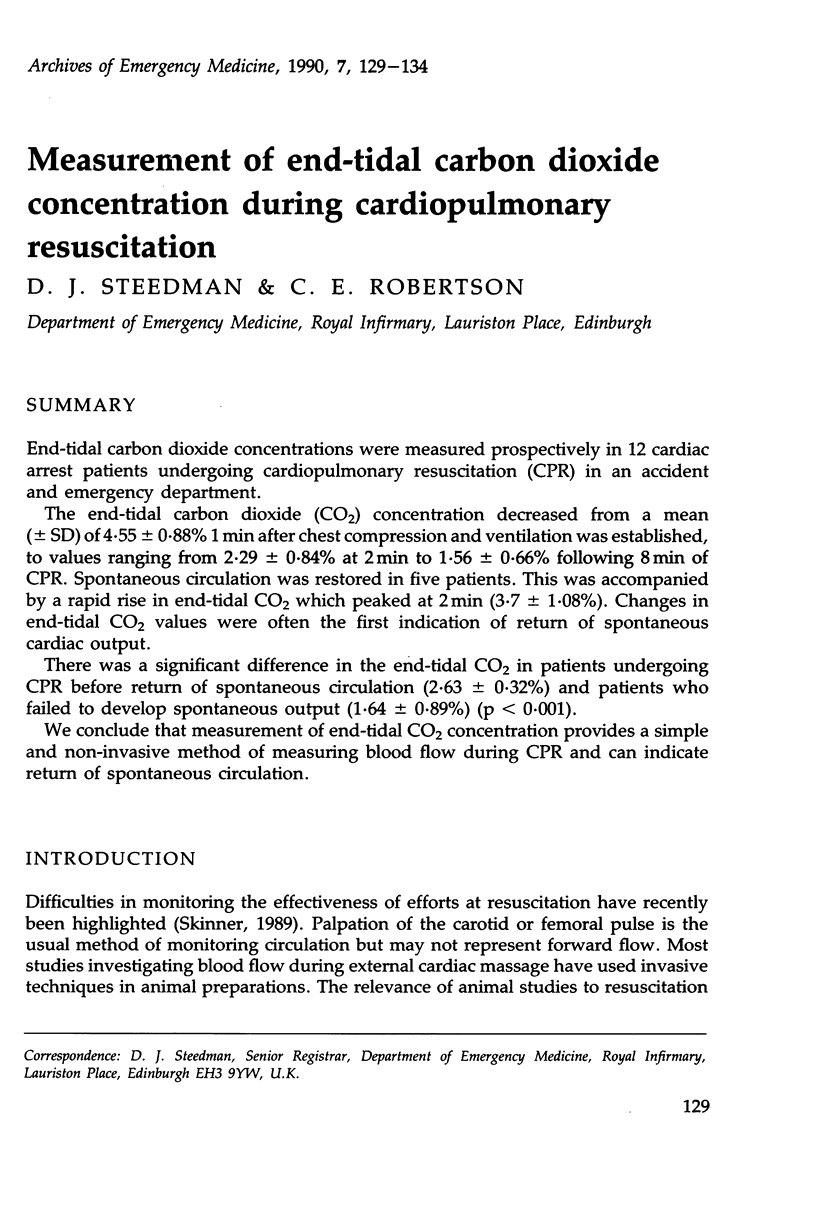
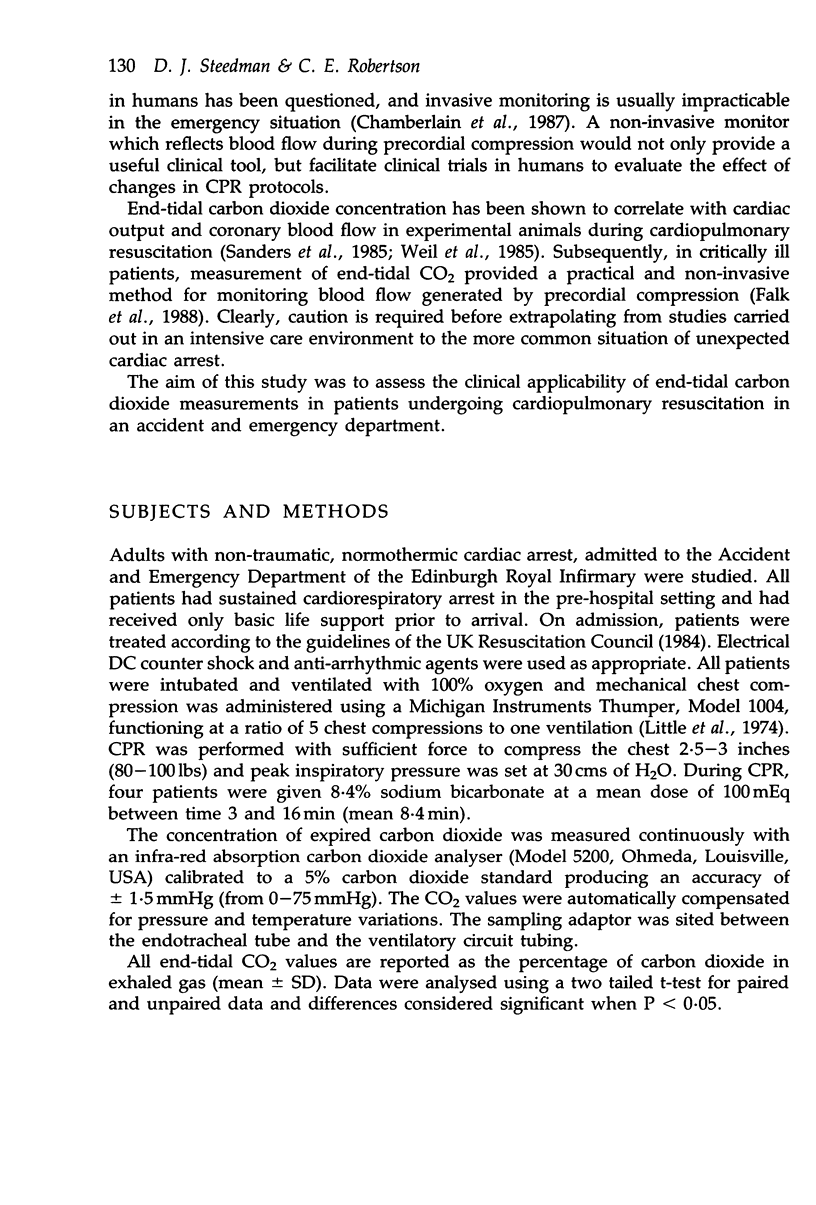
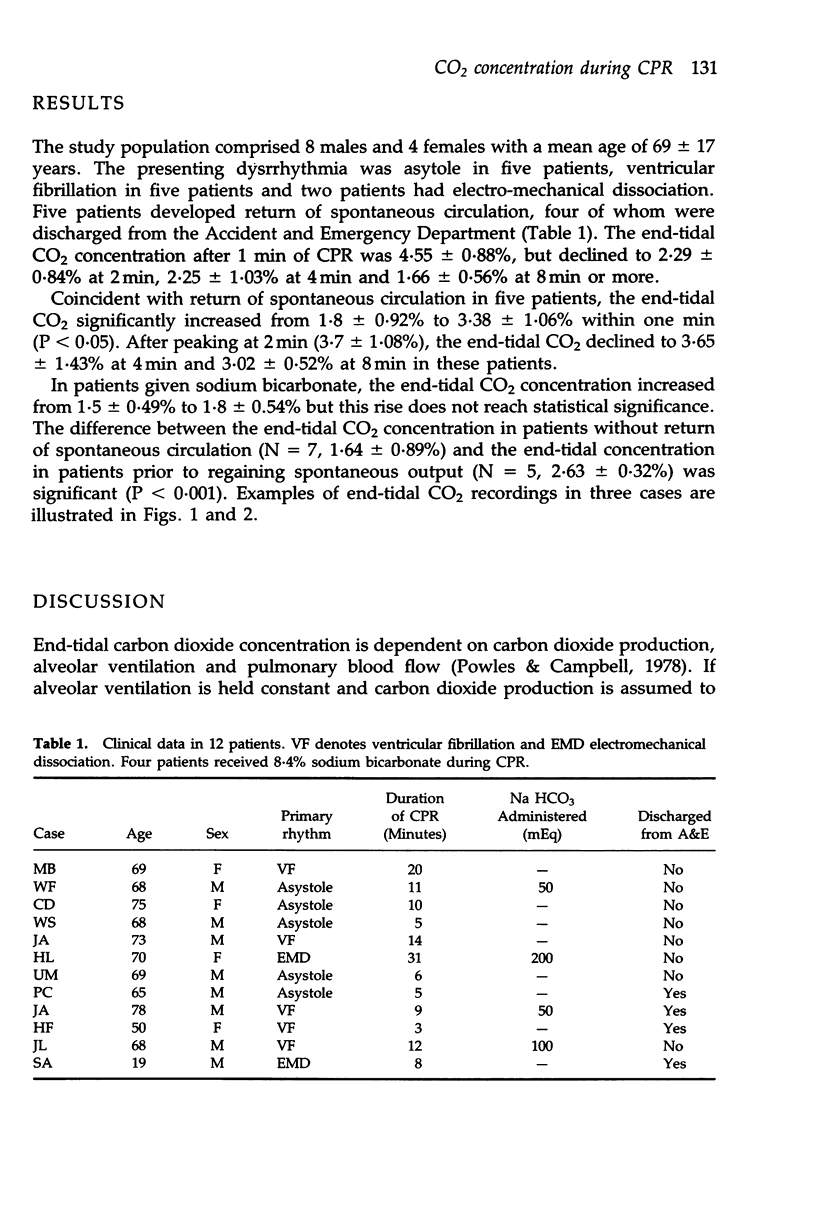
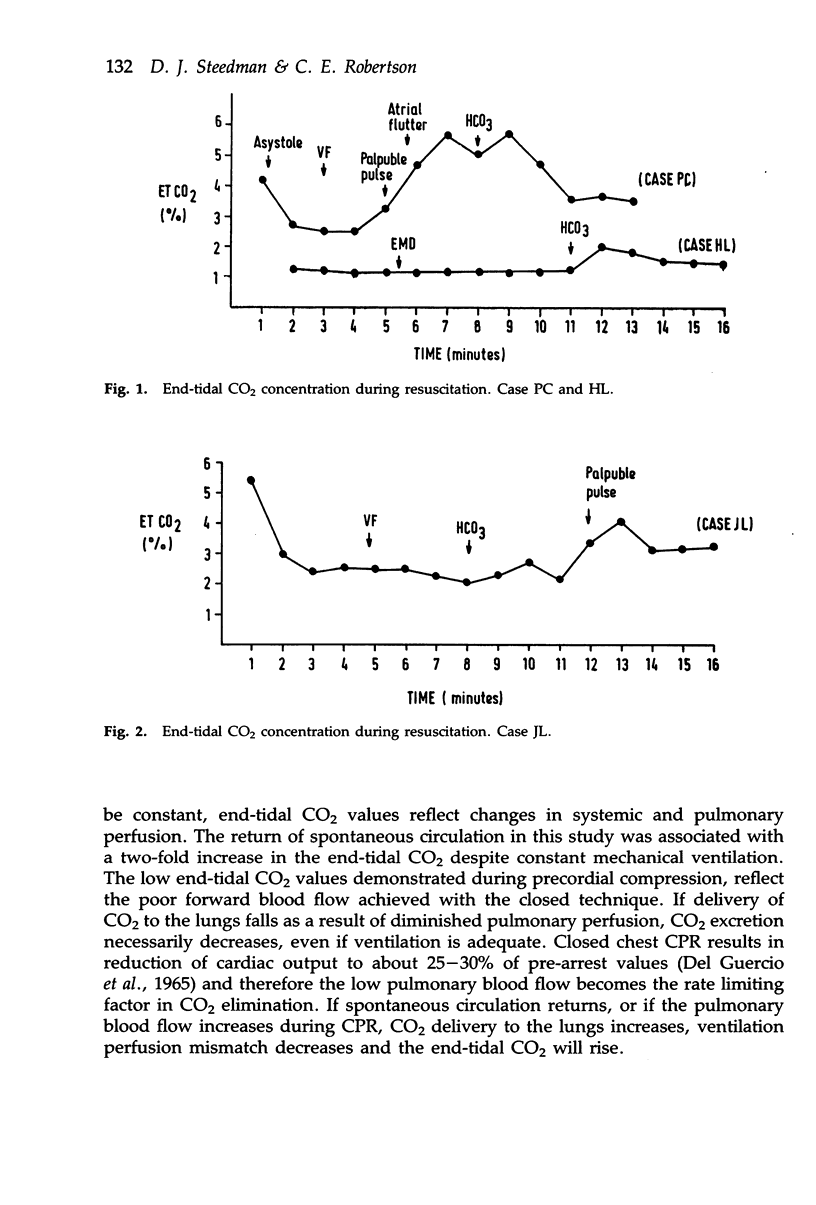
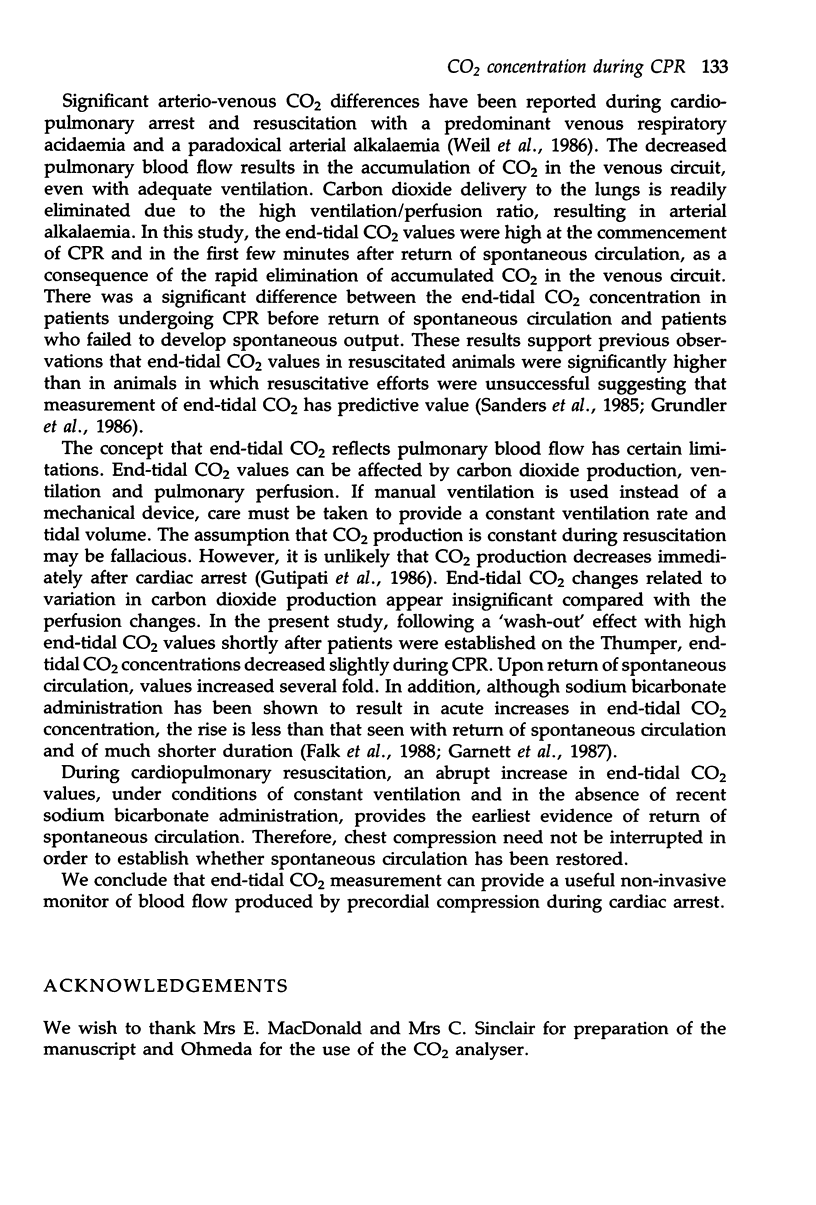
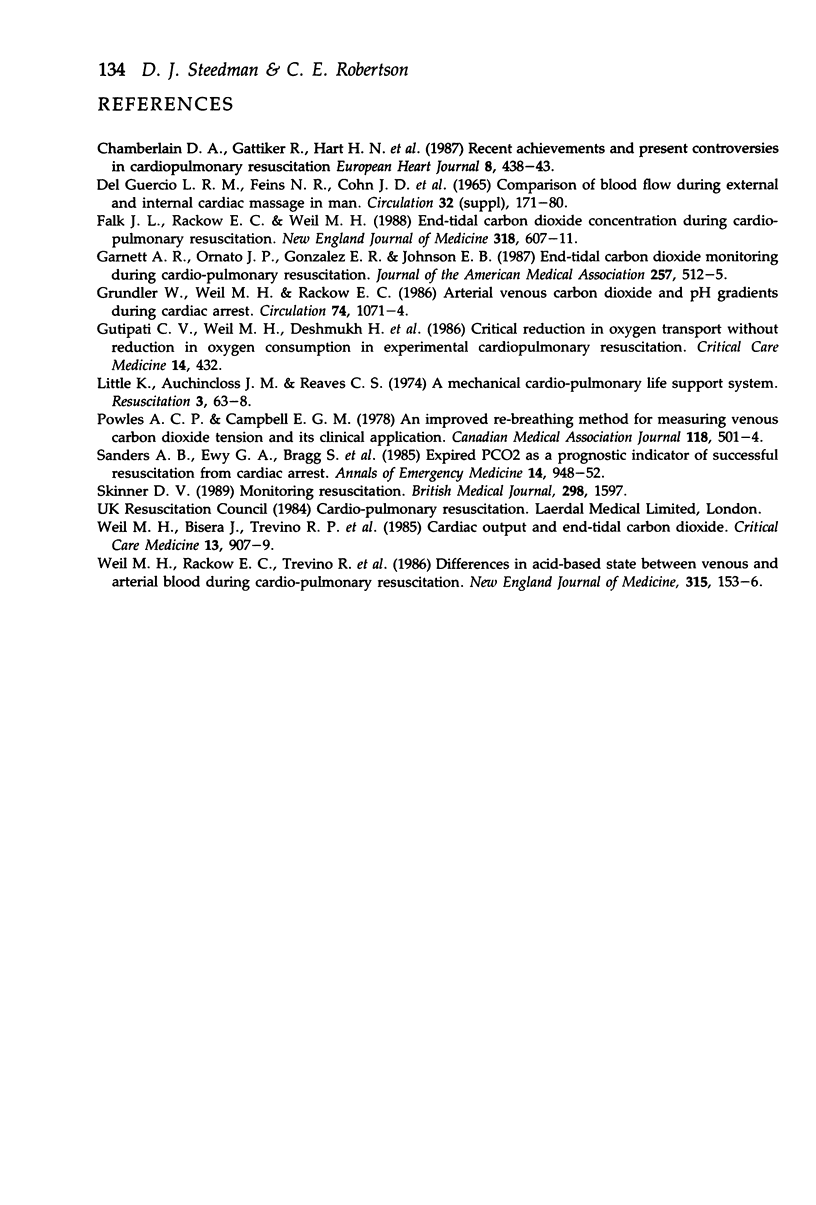
Selected References
These references are in PubMed. This may not be the complete list of references from this article.
- Chamberlain D. A., Gattiker R., Hart H. N., Holmberg S., Kulbertus H. E., Marsden A., Meursing B. T., Mogensen L. Recent achievements and present controversies in cardiopulmonary resuscitation. Eur Heart J. 1987 May;8(5):438–443. doi: 10.1093/oxfordjournals.eurheartj.a062302. [DOI] [PubMed] [Google Scholar]
- Falk J. L., Rackow E. C., Weil M. H. End-tidal carbon dioxide concentration during cardiopulmonary resuscitation. N Engl J Med. 1988 Mar 10;318(10):607–611. doi: 10.1056/NEJM198803103181005. [DOI] [PubMed] [Google Scholar]
- Garnett A. R., Ornato J. P., Gonzalez E. R., Johnson E. B. End-tidal carbon dioxide monitoring during cardiopulmonary resuscitation. JAMA. 1987 Jan 23;257(4):512–515. [PubMed] [Google Scholar]
- Grundler W., Weil M. H., Rackow E. C. Arteriovenous carbon dioxide and pH gradients during cardiac arrest. Circulation. 1986 Nov;74(5):1071–1074. doi: 10.1161/01.cir.74.5.1071. [DOI] [PubMed] [Google Scholar]
- Little K., Auchincloss J. M., Reaves C. S. A mechanical cardiopulmonary life-support system. Resuscitation. 1974;3(1):63–68. doi: 10.1016/0300-9572(74)90028-8. [DOI] [PubMed] [Google Scholar]
- Powles A. C., Campbell E. J. An improved rebreathing method for measuring mixed venous carbon dioxide tension and its clinical application. Can Med Assoc J. 1978 Mar 4;118(5):501-4,552. [PMC free article] [PubMed] [Google Scholar]
- Sanders A. B., Ewy G. A., Bragg S., Atlas M., Kern K. B. Expired PCO2 as a prognostic indicator of successful resuscitation from cardiac arrest. Ann Emerg Med. 1985 Oct;14(10):948–952. doi: 10.1016/s0196-0644(85)80235-3. [DOI] [PubMed] [Google Scholar]
- Skinner D. V. Monitoring resuscitation. How to start and monitor, and when to stop. BMJ. 1989 Jun 17;298(6688):1597–1598. doi: 10.1136/bmj.298.6688.1597. [DOI] [PMC free article] [PubMed] [Google Scholar]
- Weil M. H., Bisera J., Trevino R. P., Rackow E. C. Cardiac output and end-tidal carbon dioxide. Crit Care Med. 1985 Nov;13(11):907–909. doi: 10.1097/00003246-198511000-00011. [DOI] [PubMed] [Google Scholar]
- Weil M. H., Rackow E. C., Trevino R., Grundler W., Falk J. L., Griffel M. I. Difference in acid-base state between venous and arterial blood during cardiopulmonary resuscitation. N Engl J Med. 1986 Jul 17;315(3):153–156. doi: 10.1056/NEJM198607173150303. [DOI] [PubMed] [Google Scholar]


